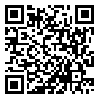Volume 28 - Supplementary
IBJ 2024, 28 - Supplementary: 416-416 |
Back to browse issues page
Download citation:
BibTeX | RIS | EndNote | Medlars | ProCite | Reference Manager | RefWorks
Send citation to:



BibTeX | RIS | EndNote | Medlars | ProCite | Reference Manager | RefWorks
Send citation to:
Rouhani S, Yaghoobi H. Therapeutic Potential Medicinal Plants in the Chaharmahal and Bakhtiari Provinces of Iran against Cardiovascular Diseases through Bioinformatics and Systems Biology Approach. IBJ 2024; 28 :416-416
URL: http://ibj.pasteur.ac.ir/article-1-4853-en.html
URL: http://ibj.pasteur.ac.ir/article-1-4853-en.html
Abstract:
Introduction: Cardiovascular diseases (CVDs) are one of the leading causes of death worldwide, placing a significant burden on healthcare systems. Despite advances in medical interventions, there is a growing interest in exploring alternative treatment options, particularly herbal compounds, due to their potential efficacy and minimal side effects. This research aims to investigate the therapeutic role of plant compounds against CVDs using bioinformatics and systems biology approaches and to discover their potential as adjunctive or alternative treatments. Virtual screening to achieve the best therapeutic target of the best herbal combination reduces the cost and time spent on data review.
Methods and Materials: In this study, the names and then the three-dimensional structure of all native plant compounds of the province are extracted using the natural flora of plants using several databases. Plant names were searched in the ChEBI database for compounds. In the following, using the related servers, their potential targets are identified. The PharmMapper website will be used to identify potential target candidates for these compounds. The identified targets are related to diseases, and the best target or targets are determined by drawing biological networks using relevant software. Then, the most effective compounds with the highest impact on the targets are selected by drawing the target-drug network and molecular docking and virtual screening methods. Their structure was retrieved from the protein database in PDB format and converted to pdbqt using AutoDock software. Vina software in PyRx, a virtual screening software, was used for docking. PyMol and DiscoveryStudio were used to analyze the docked complexes.
Results: Herbal medicines were collected using articles and databases, and their effective compounds were extracted from the ChEBI database. The Network Analyser results calculate parameters such as the Betweenness centrality, degrees, and clustering coefficient, which are used to select the best molecular targets. TGFBR1, ADRB1, GATA4, ADRA1D, and CACNA1B were the best potential therapeutic targets. Using docking results, the effective compounds of Zataria multiflora and valerian had good results on target proteins in terms of pharmacodynamic parameters.
Conclusion and Discussion: Network pharmacology analysis showed the key pathways involved in recovering heart diseases caused by natural compounds in medicinal plants. Five pathways were obtained from the drug-target network analysis (TGFBR1, ADRB1, GATA4, ADRA1D, CACNA1B), and molecular docking studies of these pathways revealed that the identified chemical compounds had strong binding affinities with these pathway components. Additional in vitro and in vivo experiments will help validate and optimize the findings of this study.

Methods and Materials: In this study, the names and then the three-dimensional structure of all native plant compounds of the province are extracted using the natural flora of plants using several databases. Plant names were searched in the ChEBI database for compounds. In the following, using the related servers, their potential targets are identified. The PharmMapper website will be used to identify potential target candidates for these compounds. The identified targets are related to diseases, and the best target or targets are determined by drawing biological networks using relevant software. Then, the most effective compounds with the highest impact on the targets are selected by drawing the target-drug network and molecular docking and virtual screening methods. Their structure was retrieved from the protein database in PDB format and converted to pdbqt using AutoDock software. Vina software in PyRx, a virtual screening software, was used for docking. PyMol and DiscoveryStudio were used to analyze the docked complexes.
Results: Herbal medicines were collected using articles and databases, and their effective compounds were extracted from the ChEBI database. The Network Analyser results calculate parameters such as the Betweenness centrality, degrees, and clustering coefficient, which are used to select the best molecular targets. TGFBR1, ADRB1, GATA4, ADRA1D, and CACNA1B were the best potential therapeutic targets. Using docking results, the effective compounds of Zataria multiflora and valerian had good results on target proteins in terms of pharmacodynamic parameters.
Conclusion and Discussion: Network pharmacology analysis showed the key pathways involved in recovering heart diseases caused by natural compounds in medicinal plants. Five pathways were obtained from the drug-target network analysis (TGFBR1, ADRB1, GATA4, ADRA1D, CACNA1B), and molecular docking studies of these pathways revealed that the identified chemical compounds had strong binding affinities with these pathway components. Additional in vitro and in vivo experiments will help validate and optimize the findings of this study.

| Rights and permissions | |
 |
This work is licensed under a Creative Commons Attribution-NonCommercial 4.0 International License. |







.png)
